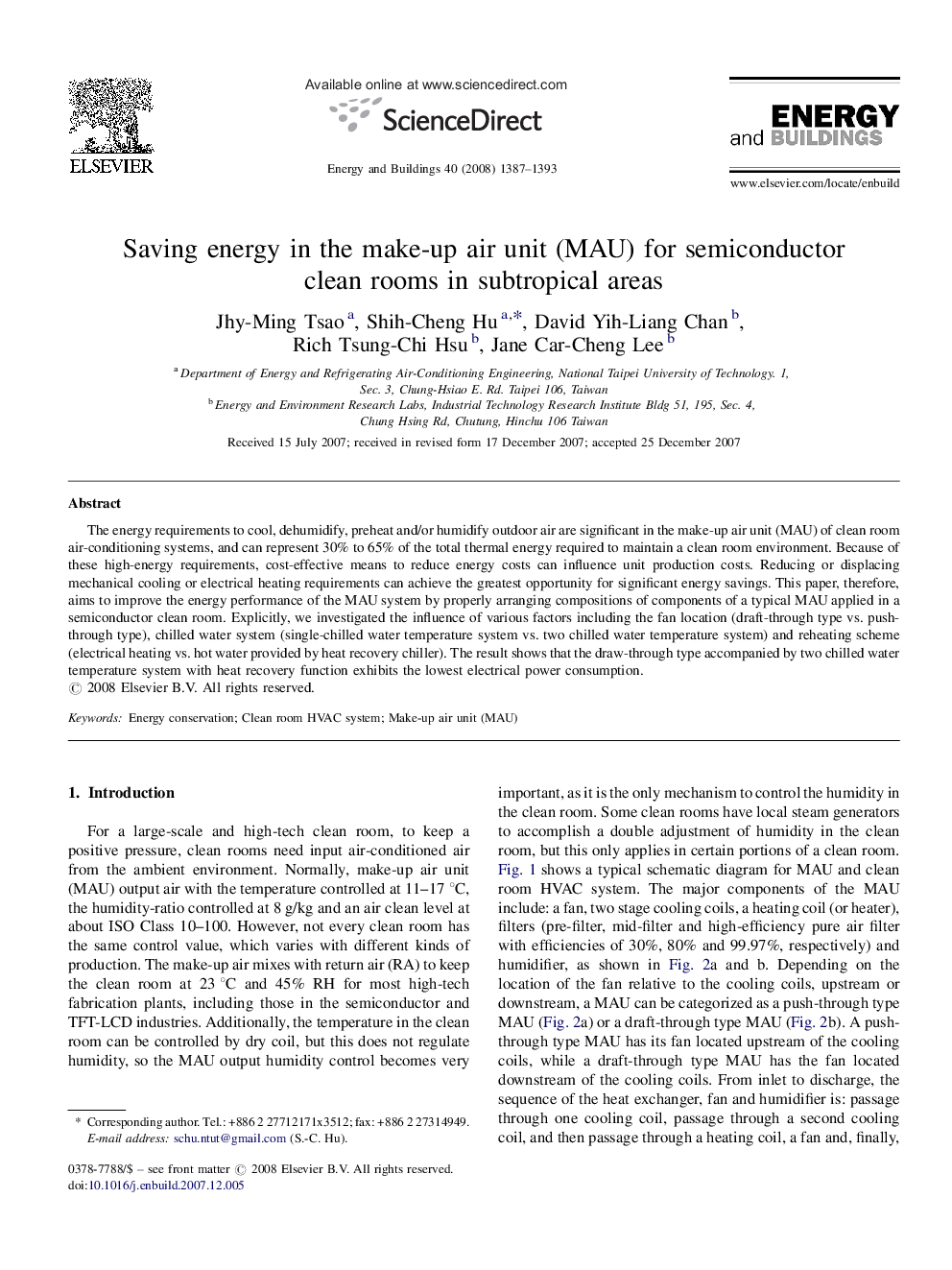| Article ID | Journal | Published Year | Pages | File Type |
|---|---|---|---|---|
| 265448 | Energy and Buildings | 2008 | 7 Pages |
The energy requirements to cool, dehumidify, preheat and/or humidify outdoor air are significant in the make-up air unit (MAU) of clean room air-conditioning systems, and can represent 30% to 65% of the total thermal energy required to maintain a clean room environment. Because of these high-energy requirements, cost-effective means to reduce energy costs can influence unit production costs. Reducing or displacing mechanical cooling or electrical heating requirements can achieve the greatest opportunity for significant energy savings. This paper, therefore, aims to improve the energy performance of the MAU system by properly arranging compositions of components of a typical MAU applied in a semiconductor clean room. Explicitly, we investigated the influence of various factors including the fan location (draft-through type vs. push-through type), chilled water system (single-chilled water temperature system vs. two chilled water temperature system) and reheating scheme (electrical heating vs. hot water provided by heat recovery chiller). The result shows that the draw-through type accompanied by two chilled water temperature system with heat recovery function exhibits the lowest electrical power consumption.
